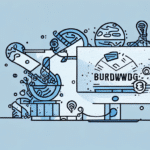A Comprehensive Guide to Kickstarter Fulfillment
If you're planning to launch a Kickstarter campaign, mastering the fulfillment process is crucial to ensuring your backers receive their rewards promptly and efficiently. Fulfillment involves more than just dispatching packages; it encompasses inventory management, shipping logistics, customs compliance, and ongoing communication with backers. In this guide, we'll explore the fundamentals of Kickstarter fulfillment, along with essential tips, strategies, and best practices to help your campaign succeed.
1. Understanding Kickstarter Fulfillment
The Fulfillment Process
Kickstarter fulfillment begins once your campaign is successfully funded. After the campaign ends, you'll obtain a list of backers and their shipping information. Key steps include managing inventory to meet demand, carefully packaging products, labeling shipments accurately, and coordinating with reliable shipping partners. Effective fulfillment ensures that backers receive their rewards on time, maintaining trust and satisfaction.
Inventory Management
Proper inventory management is vital to prevent stockouts or overproduction. Utilize inventory tracking tools to monitor stock levels in real-time and adjust production plans accordingly. According to a Forbes article, efficient inventory management can reduce costs by up to 15%.
Shipping Logistics
Shipping logistics involve selecting the right carriers, understanding shipping rates, and optimizing delivery routes. Consider partnering with experienced logistics providers to streamline this process. For more information on shipping strategies, refer to the Shipping Industry Insights.
2. Developing an Effective Fulfillment Strategy
Planning Ahead
A well-structured fulfillment strategy anticipates potential challenges such as backorders and delivery delays. Establish clear timelines and set realistic delivery expectations to mitigate risks.
Budgeting and Forecasting
Accurate budgeting is essential for covering fulfillment costs, including production, shipping, and logistics fees. Implement forecasting models to estimate demand and allocate resources efficiently. Setting aside approximately 30% of your budget for fulfillment expenses is recommended by financial experts.
Selecting the Right Fulfillment Partner
Choosing a reliable fulfillment partner is critical for smooth operations. Evaluate potential partners based on their experience, scalability, service offerings, and customer support. Ensure they can handle the volume of orders and provide tracking services to keep backers informed. Resources like Fulfillment Services Directory can help identify suitable partners.
3. Managing Shipping and Logistics
Domestic vs. International Shipping
Decide whether to offer only domestic shipping or include international backers. International shipping requires navigating customs regulations and higher shipping costs. Resources like the Universal Postal Union provide guidelines on international shipping requirements.
Packaging and Labeling
Use durable packaging materials to protect products during transit. Accurate labeling, including shipping addresses and tracking information, is essential. Incorporate branding elements to enhance the unboxing experience for backers.
Tracking and Transparency
Provide backers with tracking numbers and regular updates on their shipments. Transparency in shipping status builds trust and reduces inquiries and complaints.
4. Communication with Backers
Regular Updates
Maintain consistent communication with backers through updates on your Kickstarter page, emails, and social media. Inform them about production progress, shipping timelines, and any potential issues.
Handling Returns and Exchanges
Establish clear policies for returns and exchanges. Efficiently manage any requests to maintain positive relationships with backers.
Customer Support
Provide responsive customer support to address backer inquiries and resolve issues promptly. Tools like BackerKit can assist in managing communication and fulfillment tasks.
5. Overcoming Common Fulfillment Challenges
Managing Inventory Levels
Accurate demand forecasting prevents inventory shortages or excess. Use data-driven approaches to predict sales and adjust inventory accordingly.
Navigating Shipping Delays
Develop contingency plans for potential shipping delays. Communicate proactively with backers to manage expectations and minimize frustration.
Compliance with Regulations
Ensure compliance with all relevant shipping and customs regulations, especially for international orders. Failure to comply can result in delays and additional costs.
6. Leveraging Technology for Fulfillment Optimization
Fulfillment Management Software
Implement software solutions to automate inventory tracking, order processing, and shipping logistics. Tools like ShipStation streamline fulfillment operations and enhance accuracy.
Data Analytics
Use data analytics to monitor fulfillment performance, identify bottlenecks, and make informed decisions to improve efficiency.
7. Learning from Successful Campaigns
Case Studies
Analyze successful Kickstarter campaigns to understand effective fulfillment strategies. Learn from their experiences to apply best practices to your own campaign.
Best Practices
Adopt best practices such as setting realistic goals, maintaining clear communication, and continuously monitoring fulfillment processes to ensure campaign success.
In conclusion, effective Kickstarter fulfillment requires meticulous planning, robust strategies, and proactive communication. By following the guidelines and best practices outlined in this guide, you can navigate the complexities of fulfillment and deliver a successful campaign that satisfies your backers.






















